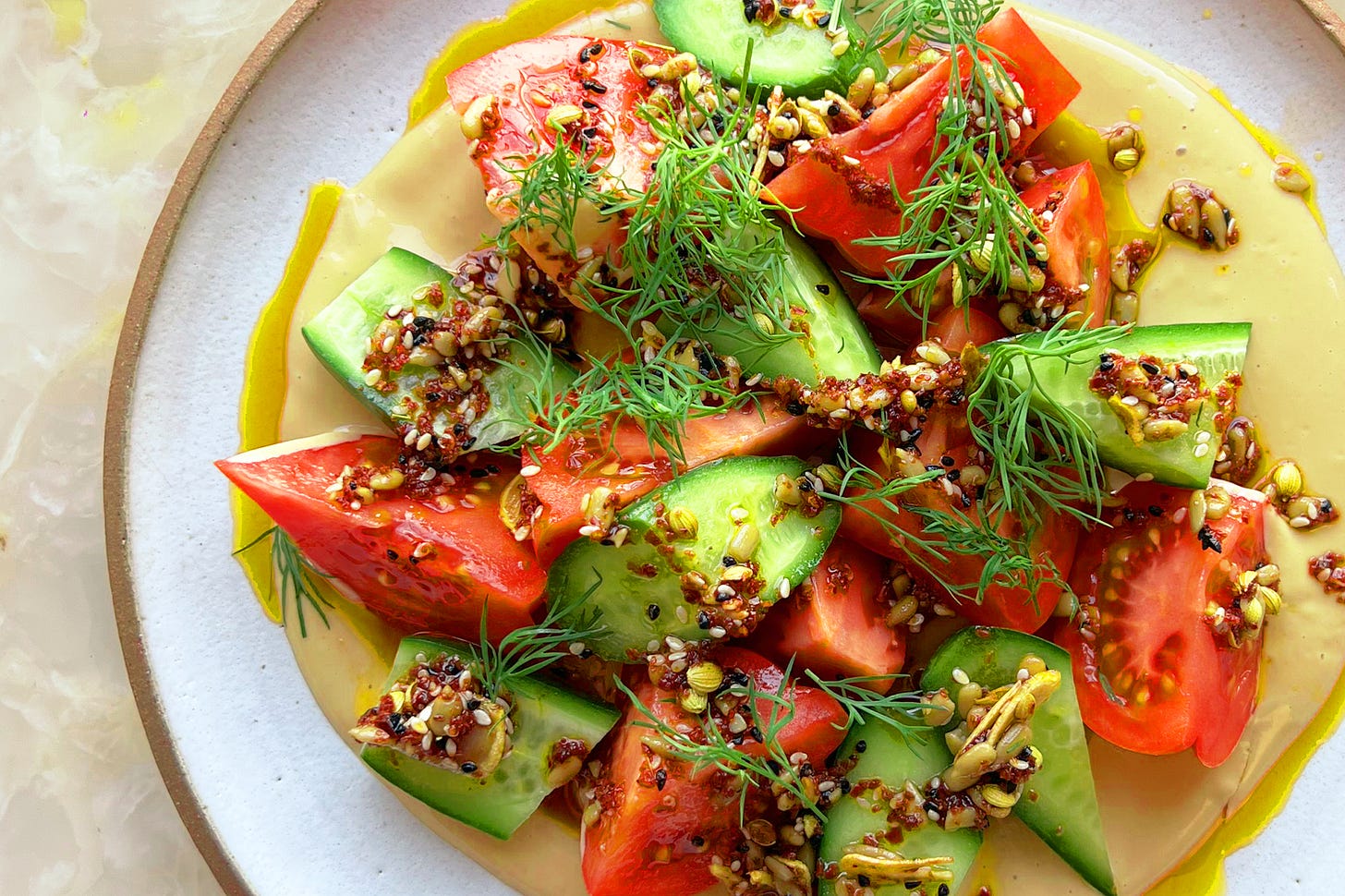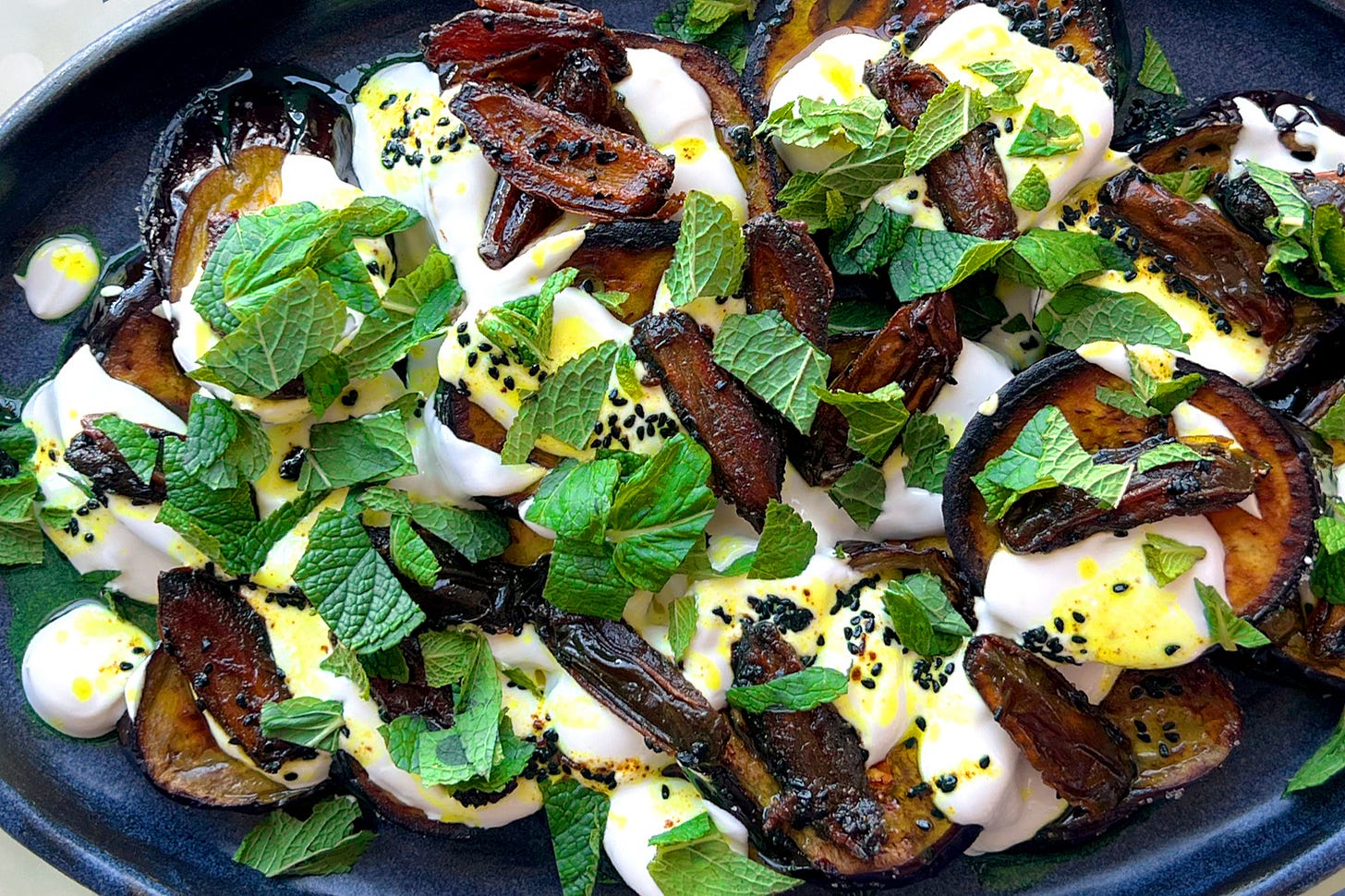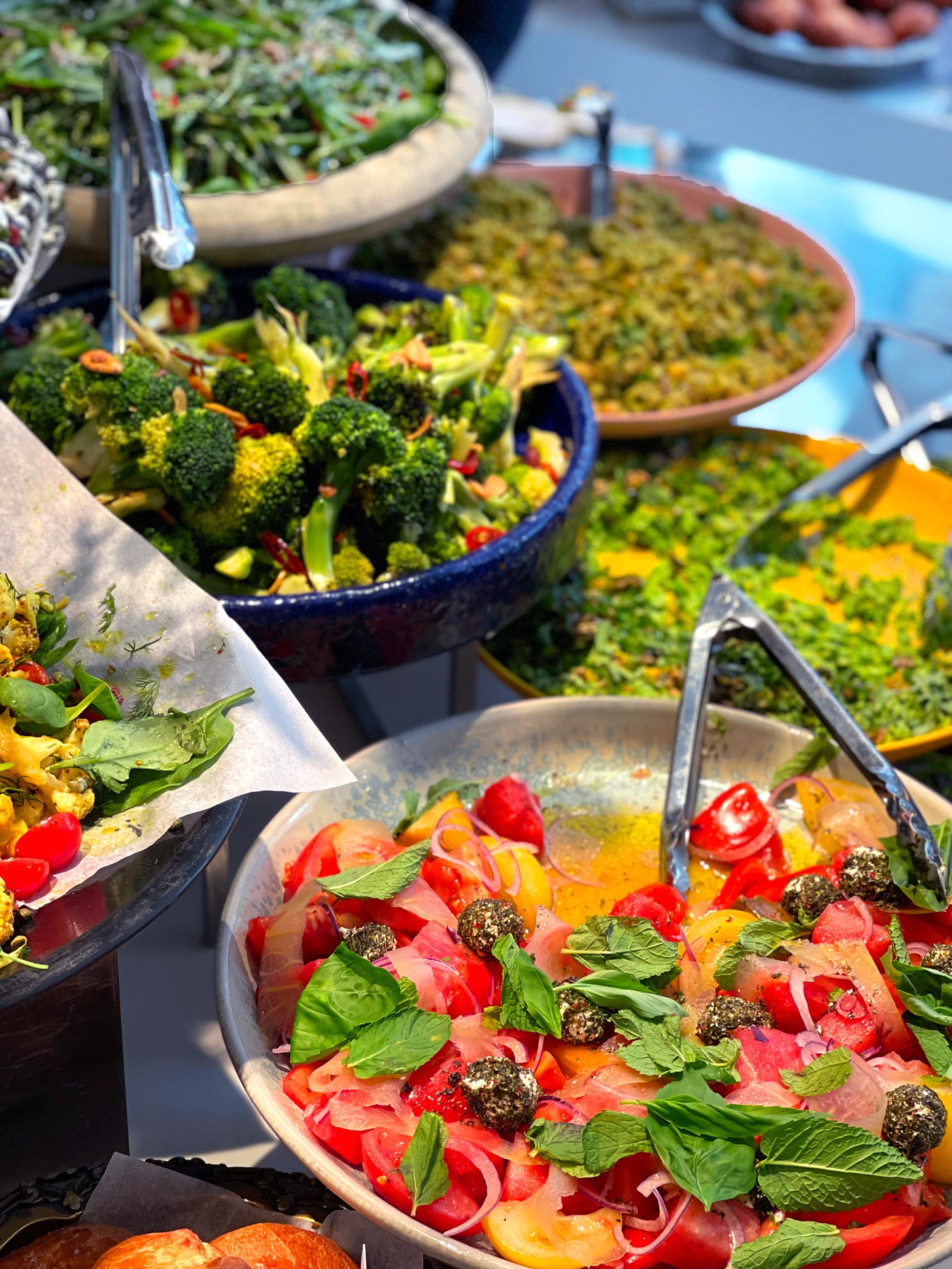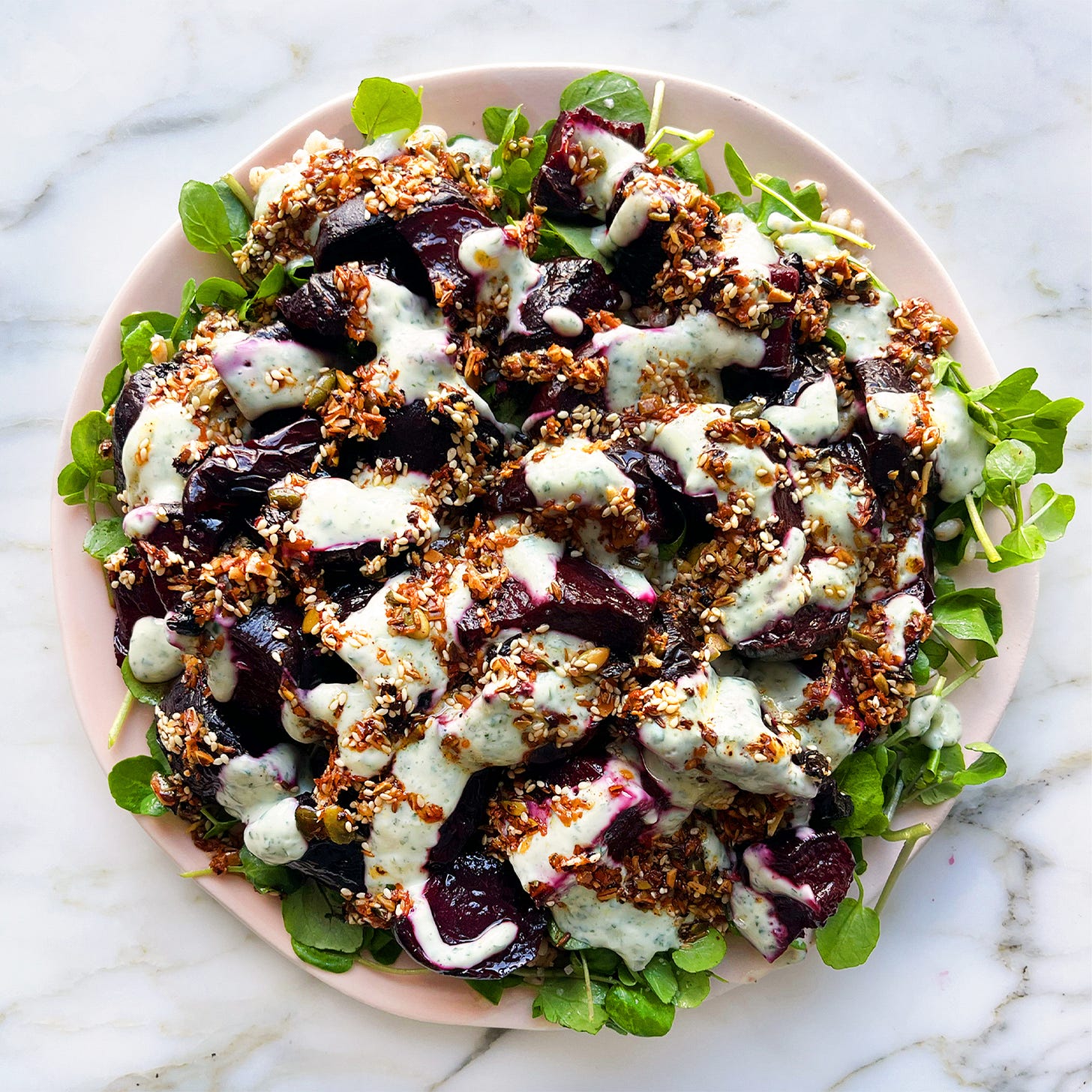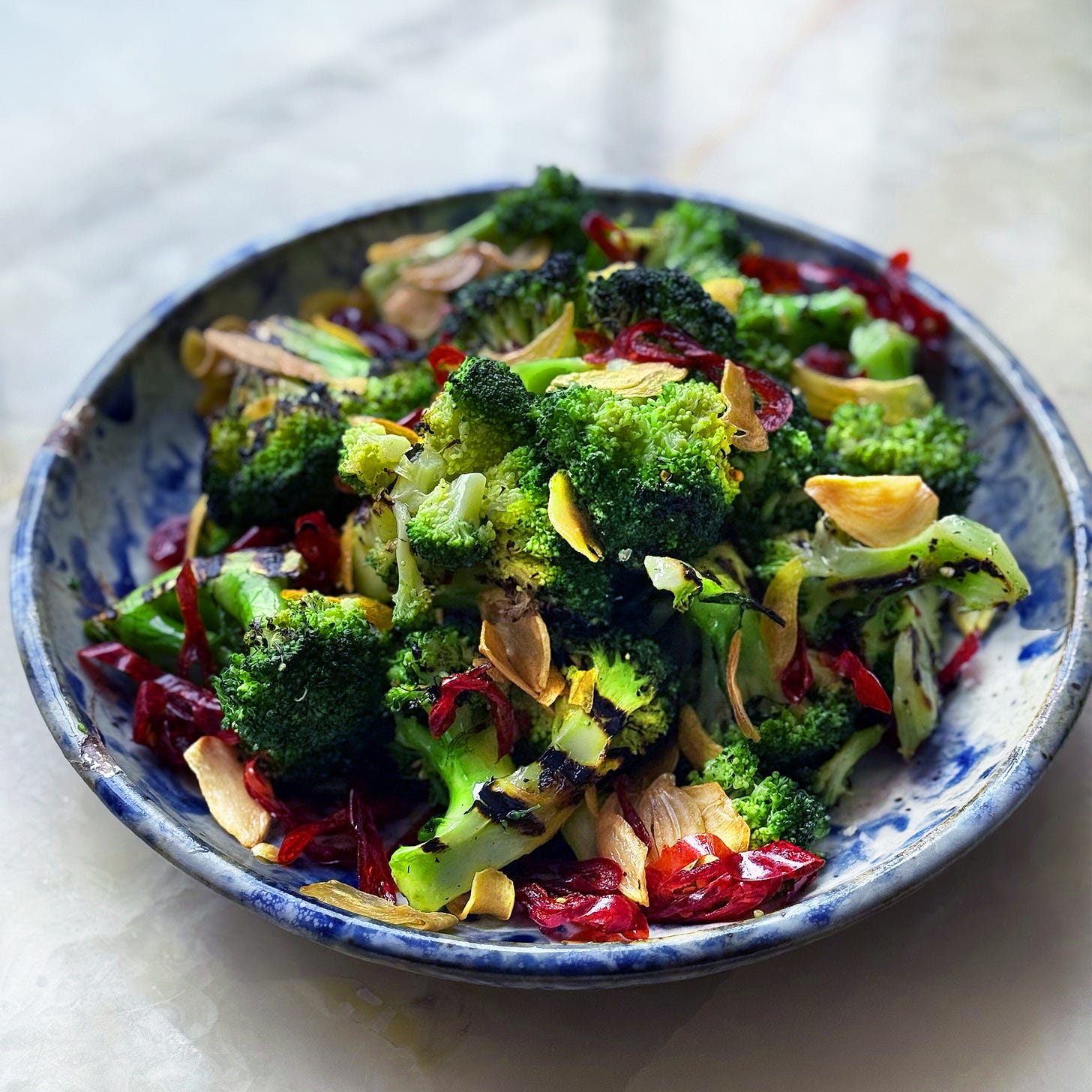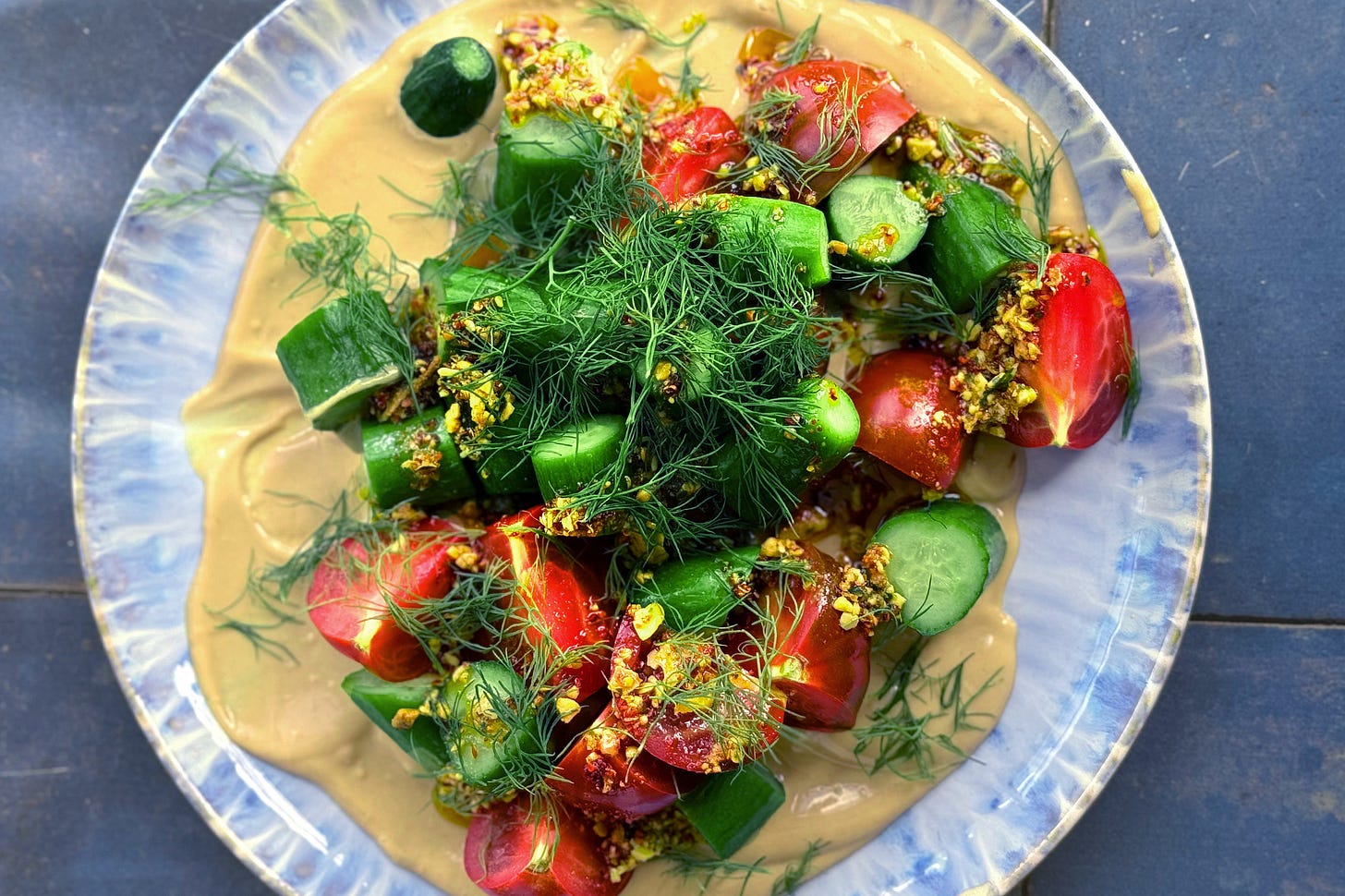My idea of a salad is pretty different from others.
To most, what comes to mind when they hear ‘salad’ is something light and fresh that is thrown together without too much thought or deep intention. Greek salad, lettuce salad, cob salad... that kind of thing.
Those are definitely salads, of course, but the first thing that comes to my mind is something much more structured and considered. It also needs to be heftier and sturdy; it can’t wilt as soon as it’s dressed or weep when you sprinkle it with salt.
Don’t get me wrong, this idea of a salad doesn’t come out of some lofty culinary principles (I love all types of salad), but from very commercial and practical considerations to do with the way we display vegetables in our London delis.
For many years now, the team and I have been perfecting the way we present cooked vegetables (and legumes and grains) - i.e. salads - to make them look and taste great when they sit on our display (“They must smile”, Cornelia says). We want them to appear fresh yet complex, they need to be substantial to make a meal, and they must transport easily in takeaway boxes without turning into mush.
This may sound a bit goal orientated, but it really informs the way I see a salad: a platter loaded with vegetables, sitting proudly amongst lots of other good-looking salads, ready to be handed over to a customer. It also makes a great display for a weekend brunch at home.
And yet, there is so much more to it.
Over the next few weeks, I want to break down the question ‘What makes an Ottolenghi salad?’ properly - my three-step train of thought when building a salad. First, choose your hero ingredient. Then, think about contrasts and layers (in two weeks). And finally, generosity - how we plate and present (the week after).
I'll be sharing six new salad recipes over the coming weeks (with a brief break to share a few Father’s Day ideas for those celebrating). All the salads are vegetarian, some built from large wedges of vegetables, others from grains, and some dips and veggie smooshes.
But let's start where I always do: your hero ingredient.
Benevolent dictatorship
Fuchsia Dunlop has a great line about ordering in Chinese restaurants - how a “benevolent dictatorship is always best.” If individual diners are left to their own devices, you'll end up with three sweet-and-sour dishes. A good meal needs one person to take charge, to think about balance (In my group of friends, this person is Sarit Packer of Honey & Co fame).
I think about salads the same way. You see, so many salads that are very democratic - everything chopped to regulation size, tossed together with equal representation. Very polite, very fair, very same-same.
This can be great (I love my chopped salads) but it’s not very Ottolenghi-counter.
I believe in benevolent dictatorships. One ingredient takes charge while everything else falls into supporting roles. It looks great and it gives the salad clarity, so it can sit on a plate alongside other salads without getting lost.
It sounds simple - pick your star and build around it - but the execution is where things get interesting.
Take beetroot as an example. If you find some young, tender beetroot at the market and want to make a salad from it, everything else flows from there. You want other earthy, sweet elements echoing through the dish - perhaps some goat's cheese for sharp contrast, nuts for texture and more earth, a drizzle of pomegranate molasses to amp up the sweetness.
If your star is green beans, lean into the greenness - fresh herbs, more green vegetables, the grassiness of olive oil.
It's not just about quantity (though that matters), it's about how I treat my chosen star, how I cut it, how I cook it, how I present it. Every other decision flows from this first, crucial choice.
The cut changes everything
Wedges versus slices. Chunks versus ribbons. Each choice alters not just the look of a dish, but how it behaves on the plate, how it carries other flavours, even how it photographs (which, for us, is a big consideration).
Slices lie flat, maximising surface area for dressings and seasonings to cling to. They create layers, allowing you to build upwards. Wedges, on the other hand, take up space, with crisp edges that caramelise, soft centres that stay tender.
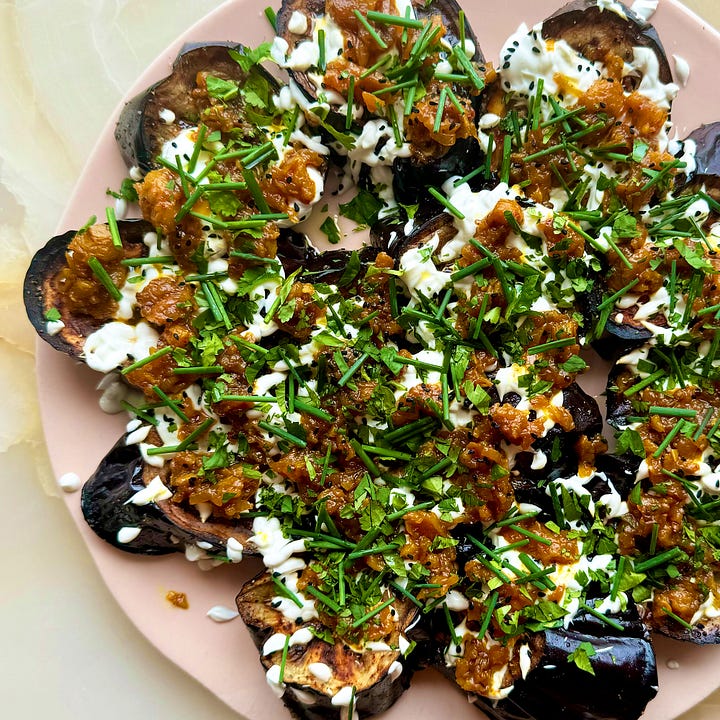
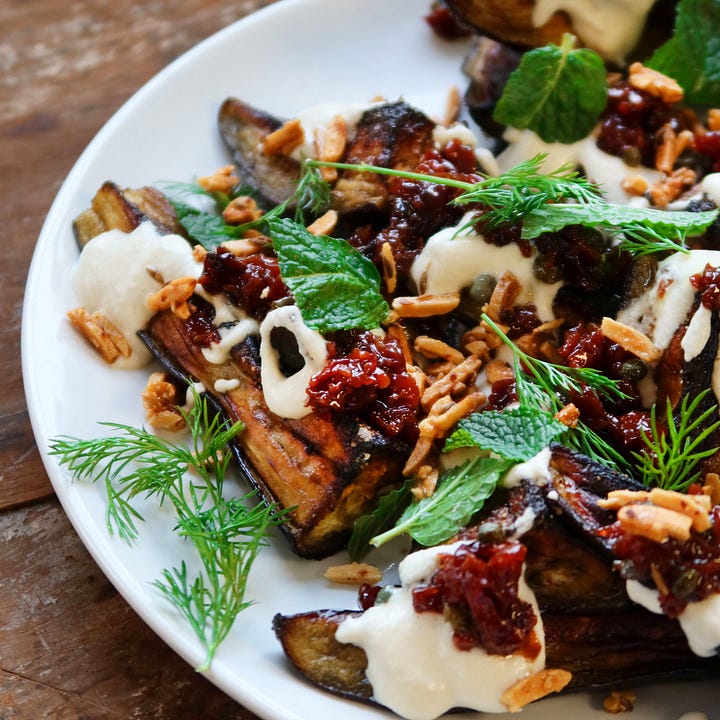
Back to beetroot: do I want neat wedges that will hold their shape and create structure? Or do I want them grated into confetti that will bleed colour into everything it touches? Perhaps both?
Generally speaking, I tend to cut my vegetables in a way that echoes their natural shape. Round vegetables I cut into wedges or slices, long vegetables into long wedges, broccoli into florets etc. I want to know what I am eating. I really can’t stand vegetables cut into perfect dice like they come off a factory line.
The two salads I'm sharing today celebrate this single-ingredient philosophy. The first is a derivative of a famous smashed cucumber salad served at the restaurant Xian Impression, around the corner from the test kitchen. This salad has inspired one recipe already; this is the second one. The other recipe today is about aubergine, cooked the way I've been doing it for decades: sliced into generous rounds that bronze in a hot oven.
Tomato and cucumber salad with tahini and spicy dukkah oil
In supporting-role to the cucumber in the Xi'an-style salad, we have added tomato this time. It gives a bit more substance, something that could anchor a summer lunch.
Both vegetables are cut into substantial chunks - there's something satisfying about the irregular shapes, the way they tumble together on the plate.
The tahini sauce, mixed with soy sauce and rice wine vinegar, creates the umami foundations (more on that in coming weeks). The dukkah oil brings warmth, though a good shop-bought chilli crisp will work if you'd rather not make your own.
Beyond the wall: a generous aubergine salad with dates and spiced yoghurt that's become one of my most-requested recipes.





